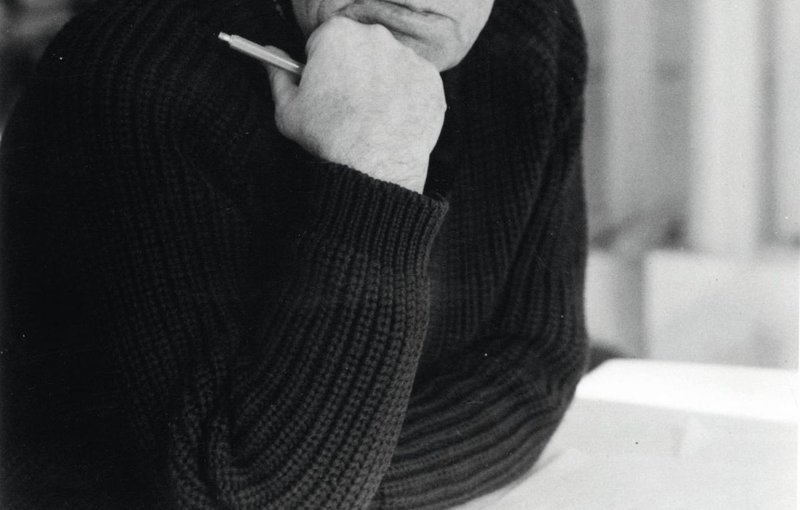Instead of an Article (1958)

‘As I cannot write an article, this dialogue is intended to replace it. It is only partially authentic, but that, of course, is also the case with the classical dialogues.’ Alvar Aalto in Arkkitehti-Arkitekten (1958):
Sigfried Giedion: ‘What do I see, old friend, are you planning to write?’
Alvar Aalto: ‘Planning and planning. I have no choice; I am compelled to.
G. ‘How awful. I thought you were just about the only architect who doesn’t write, but only builds. Are you really serious?’
A. ‘It’s not that serious, but write I must. Because the editors insist, my sense of tact tells me I can’t withdraw.’
G. ‘But what are you thinking of writing?’
A. ‘I don’t know.’
G. ‘You’ve been a teacher, one would think that you’d be able to throw something together.’
A. ‘For me, to say ‘I don’t know’ is a serious matter. Just in the capacity of teacher, in America, I should have lectured and written. My students wanted to learn, preferably everything. They asked, among other things, how one creates good art. I replied, ‘I don’t know.’ The consequences were shattering. One fine day the parents of one of my former students appeared for a meeting with the professor. The first thing they said was: ‘We’re shelling out $700.00 per term for our talented son’s education and his professor says ‘I don’t know.’ It was, judging by everything, the end of my short teaching career.’
G. ‘But you have also written poems. Hand one of them in, and you’ll get off lightly.’
A. ‘Dear friend, you don’t know what you are talking about. The Creator created paper for drawing architecture on. Everything else is, at least for my part, to misuse paper. Torheit, as Zarathustra would have said. Of course I have written poems. A few, but, naturally, good ones. But they are written in sand. And poems written in the sand are not suitable for publishers and journals. Their publisher is the wind, a splendid publisher.’
(Socrates: So it is with all art forms. Each one avails itself of speech. But only speech that truly concerns itself with something that belongs to the given artistic task. There are also artistic endeavors where speech is out of place, they are created in total silence.)
A. ‘In other words, I will not publish any poems. I would prefer to see my working drawings published, but they are too detailed and do not fit in this context.’
G. ‘But shouldn’t you get something said?’
A. ‘Architecture’s horoscope today is such that my words become negative and that isn’t very pleasant. Parallelopipeds of glass and synthetic materials, the inhuman dandy-purism of the big cities, has led irrevocably to a fashionable architecture, which is a dead end.’
G. ‘It exists, yes, but the architecture I just mentioned is highly popular in a naive world. And worse, it has caused a reaction in the opposite direction, an uncritical, clumsy search for novel forms. Housing estates with artificially varied building masses, a motley flora of motifs that don’t correspond to the valuable and biologically beautiful variability intrinsic in humans. Often they appear to be more like commercial fairs, and as for public buildings, a more like commercial fairs, and as for public buildings, a propagandistic formalism is pushing itself into the foreground, an architectural equivalent of the terrible lack of balance of the American luxury car and of industrial design in general. Grownup children playing with curves and tensions that they are unable to control. It smells of Hollywood.’
Man is forgotten … and yet true architecture exists only where man stands in the center. His tragedy and his comedy, both.
In order to lighten the foregoing, a small, gentle postscript: A great scientist, of an international reputation, is taking an afternoon nap in an easy chair in his exclusive club. A mischievous ray of sunshine awakens him. Opposite happens to sit a man whom he doesn’t know. The great man gets up and, as if still in a dream, shouts in a thunderous voice, ‘Sir, can you save me from Vällingby?’

– Alvar Aalto